Living Wood
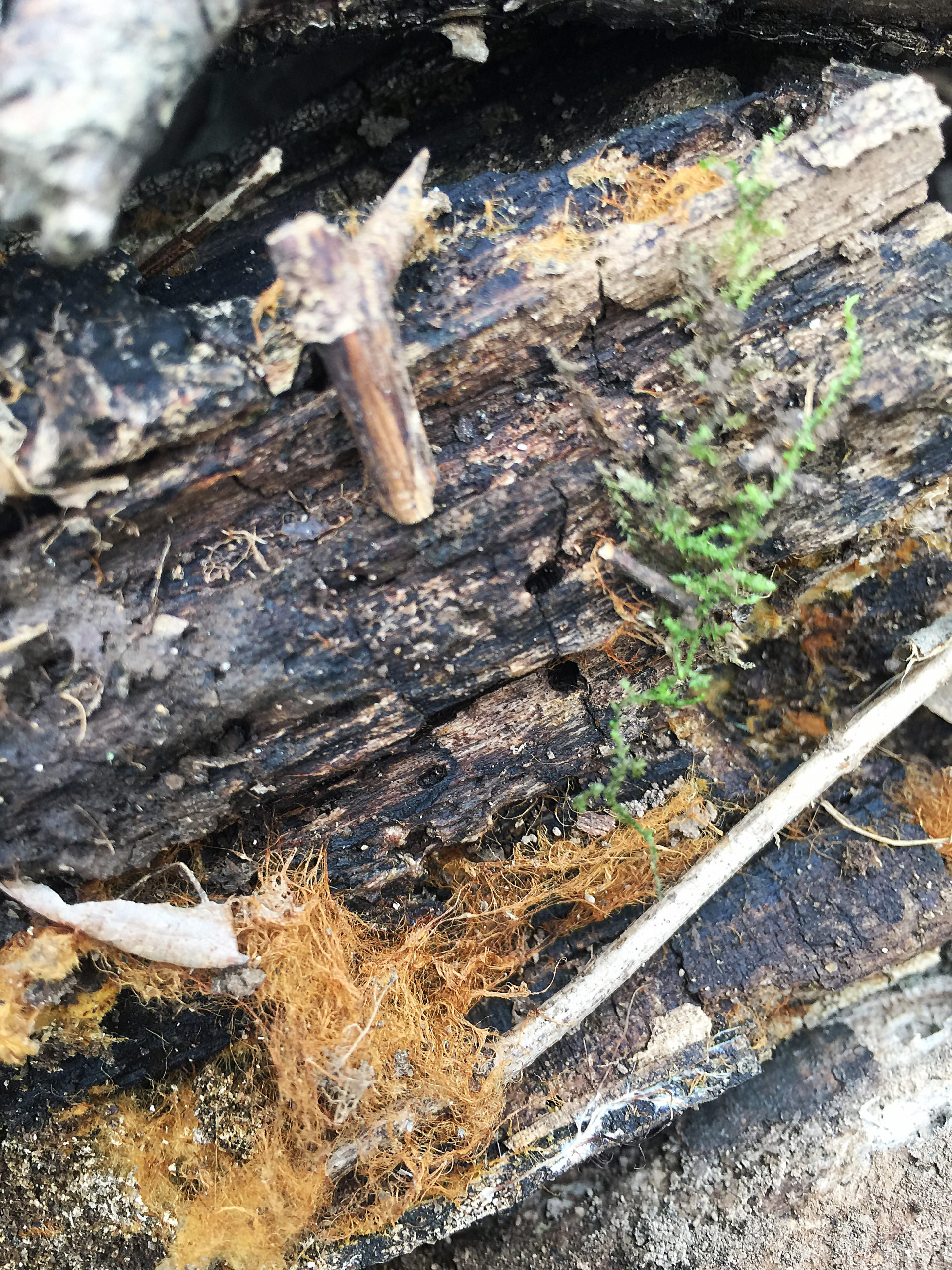
This is important stuff. Seriously.
Many people complain about fallen dead branches or wood after a windy day. It just seems like one more thing to have to take care of in our busy life. We pick them up and then have to figure out where to dispose of them. But, did you ever consider viewing this wood as an important part of your own eco-system?
In permaculture there are some important principles about trying to produce no waste, and using what you have. Those dead branches and wood, instead of being viewed as a waste product, can actually be seen as a beneficial resource for your land and garden. We can use this wood to mimic a process that happens in the wild. Let me explain how.
On the edge of our land is an old fencerow grown over with trees. Some of these trees are very old, some are younger, and some are even dead. This area has long been neglected, and may look neglected still, but it is not. It is an important part of our property that is now being tended. The invasive plants and vines growing there are slowly being removed, and replaced with natives. One thing that is not being removed, though, is the old dead trees and stumps (unless they pose a danger to our house of course) .
These dead trees and wood are important, and provide many benefits. While they are still standing these dead trunks and branches are homes to the multitude of birds and creatures that live in this area. Over time they slowly disintegrate and fall to the ground, adding to the rich humus, full of beneficial microorganisms, and other life, which form a complex system that we are only beginning to understand.
The other fallen branches and wood that fall into the lawn area can be used for a similar purpose in our gardens.
Enter the hugelkultur.
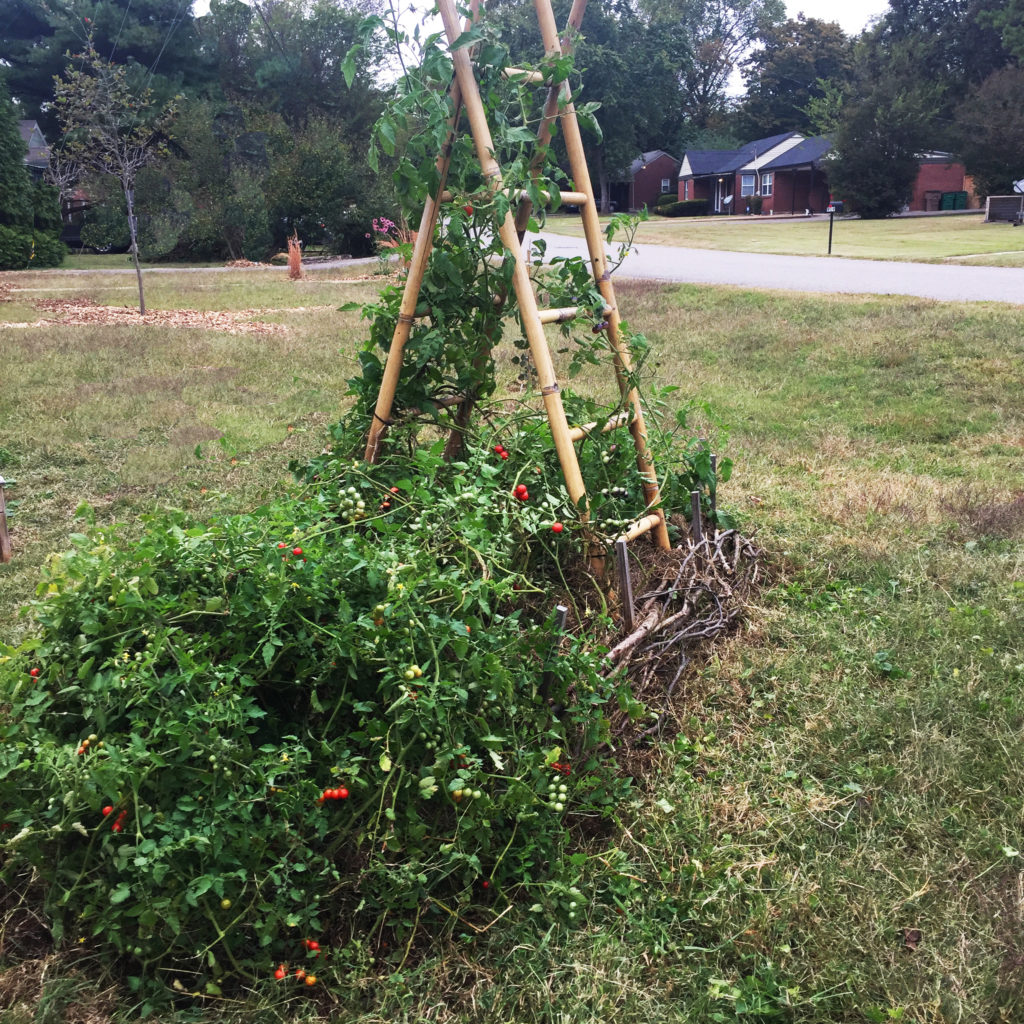
Hugelkulturs, means “hill culture” in German. It is a type of growing system that uses wood from trees, and other plant material. The concept is very simple. First, a pit is dug. Then it is filled with logs and branches. The dirt that is removed, is piled back on top of it, forming a mound that can be used for planting. So simple, and yet so brilliant.
Traditional hugelkulturs are often very large, and sometimes even use freshly cut trees, including large logs. For the average urban gardener, this is not really practical, because of space restrictions, but most importantly, because of the number of years that it takes the wood to break down, when it is put in the pits fresh or in large logs. When made in this way, as the microorganisms break down the wood, there is often a period of time that the nitrogen is actually depleted from the soil, making it not ideal for growing things.
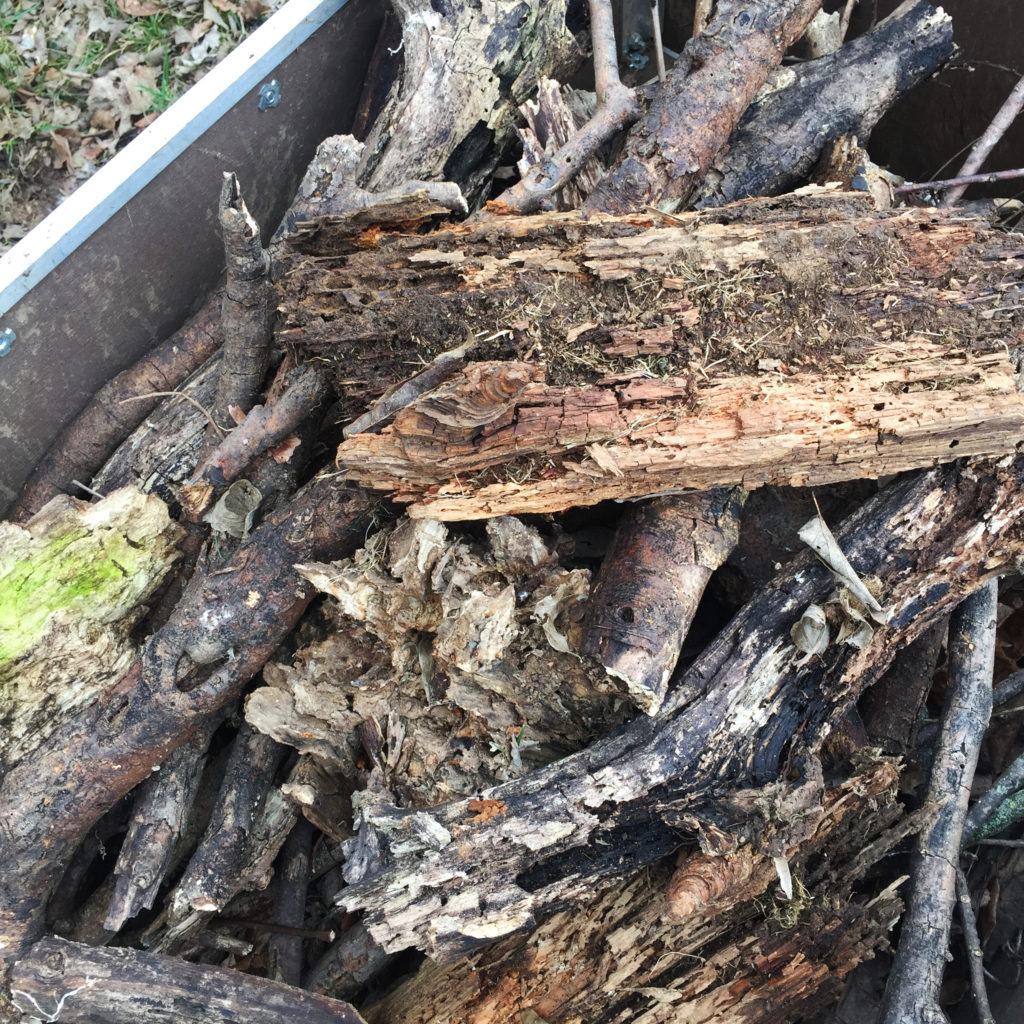
A simple solution for these problems is to use the dead and rotten branches naturally coming down from your trees. (And if you don’t have trees, I promise you there are people in your neighborhood that would be happy to have you come pick up their branches.)
When harvesting branches and wood, I try not to use the occasional branches that come down, that are still green, because of the length of time they take to decompose, and the nitrogen depletion they can cause. This wood can be stacked and saved though. When you use dead and partially decomposed wood you avoid the nitrogen depletion problem. (The more rotten the pieces are, the better.)
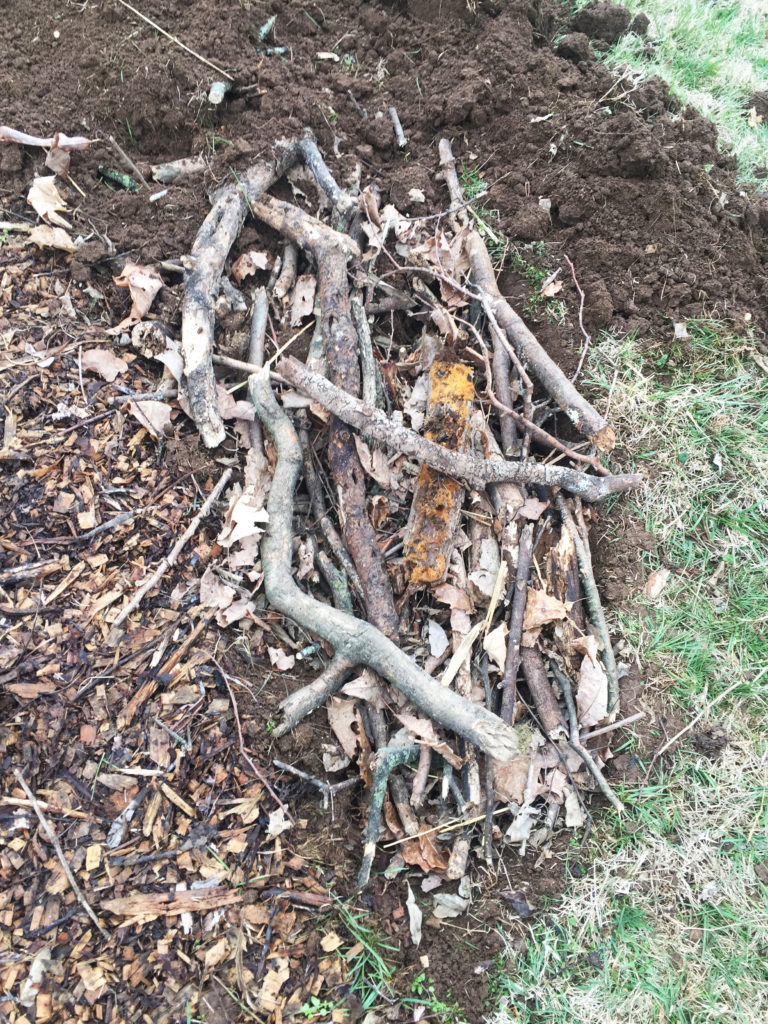
Once I have collected a sufficient quantity of wood for the hugelkultur, it is time to start digging. I typically like to dig these beds in a crescent shape, and place them where water may naturally run off my property. This serves a dual purpose, in that, in addition to being a growing space, the hugelkultur will also capture rain run off, keeping yet another resource on my land.
For a smaller bed, about 3’ x 6’, I dig down about 1-1 ½ ‘, and then lay the branches and wood in the pit, using a mixture of small and larger branches. Other plant material can be added including leaves, grass, etc. Then just pile the soil back on top, making sure that the soil goes through the spaces to fill in well. (Don’t compact it though.) Since the best time to create these is in the Fall or early Spring, I sometimes cover the hugelkultur with a layer of straw to protect the soil, and to add more nutrients.
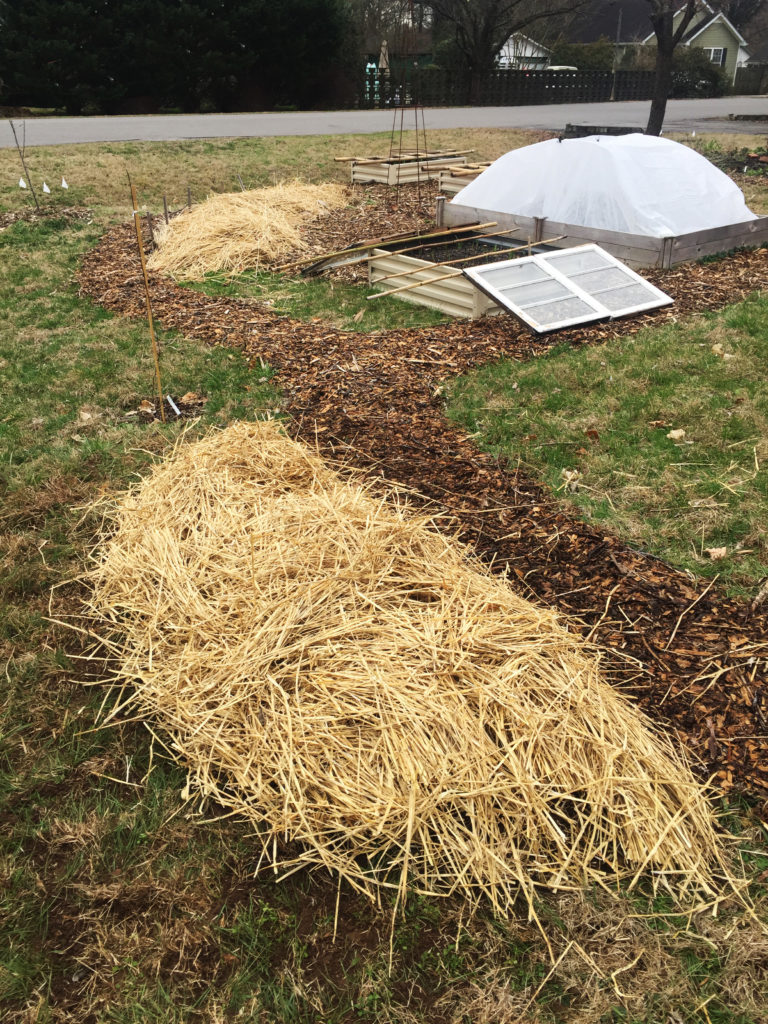
The resulting garden bed will be a nutrient dense planting space, that will both nourish your plants, and also act like a sponge to hold water when it rains, meaning that this area likely will not need to be watered, even in hot conditions. The beneficial microorganisms from the rotting wood will also inoculate your soil, increasing the biodiversity of your soil.
My favorite way to use these beds is to plant summer crops that will be there the whole season. Those crops will grow and flourish[i], as you save time and money, since you will rarely have to water (if you need to water at all). You will also not be adding chlorine and other chemicals, to your garden, that are in your tap water. These spaces are also fertile enough to support being planted densely, thereby preventing weed growth, which saves you even more time and work.
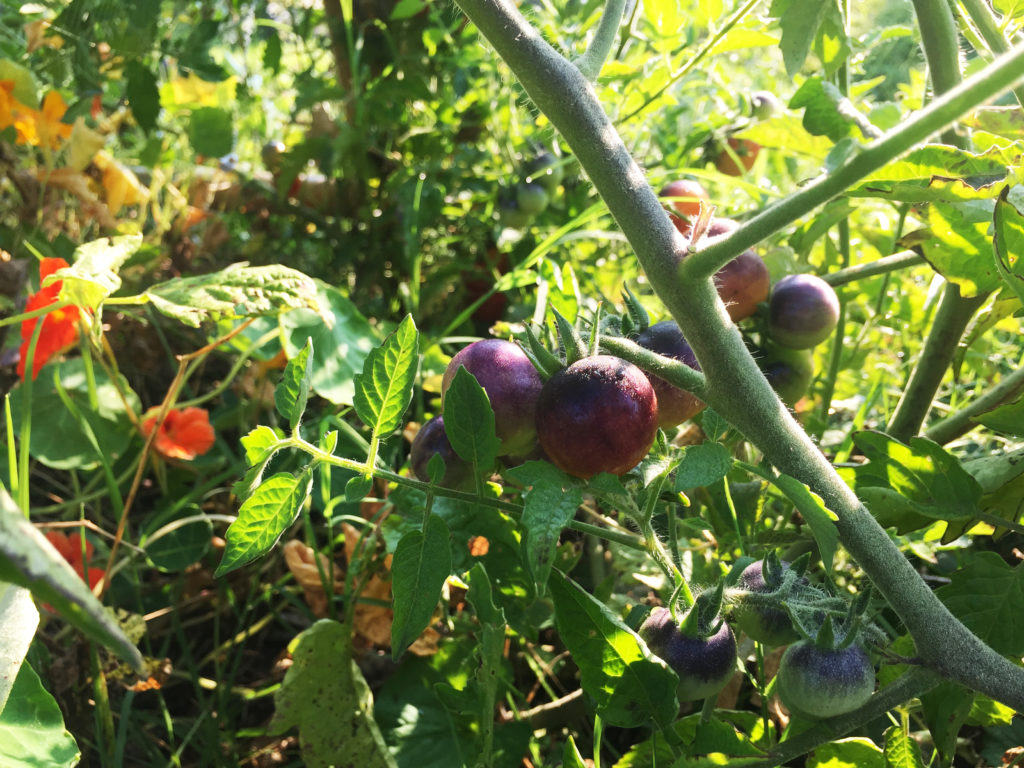
So you see, those despised broken branches, falling from your trees, really are a treasure. It is truly living wood, that can save you time and work, by giving you more fertile and moist soil.
[i] We had one of the hottest summers on record in Nashville in 2019, and a mini-hugelkultur that I planted with tomatoes, never needed to be watered once. I also only needed to weed a couple of times through the entire season. The plants flourished and produced tomatoes all summer, and continued producing long after many of my neighbors tomato plants had stopped producing.